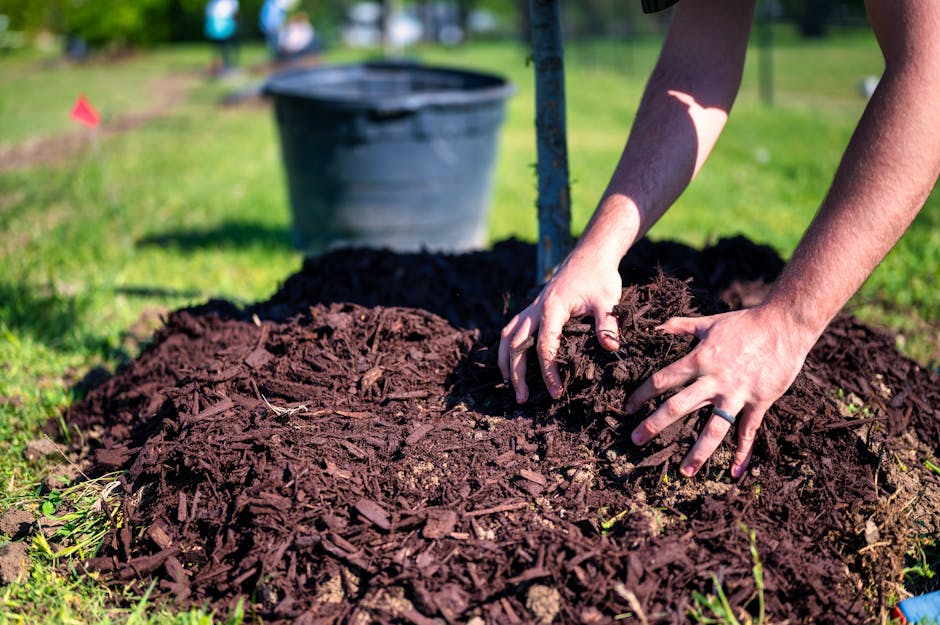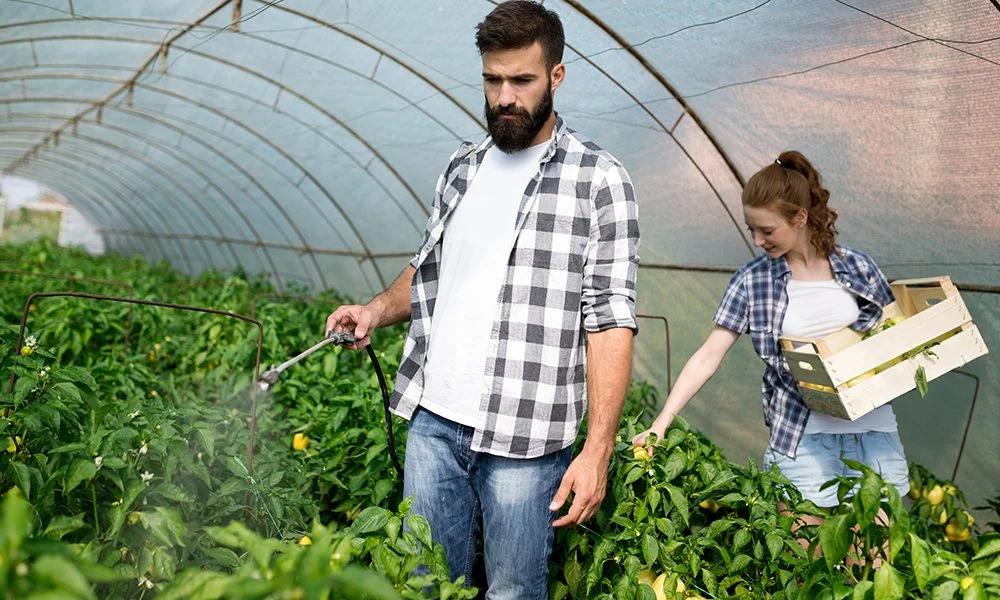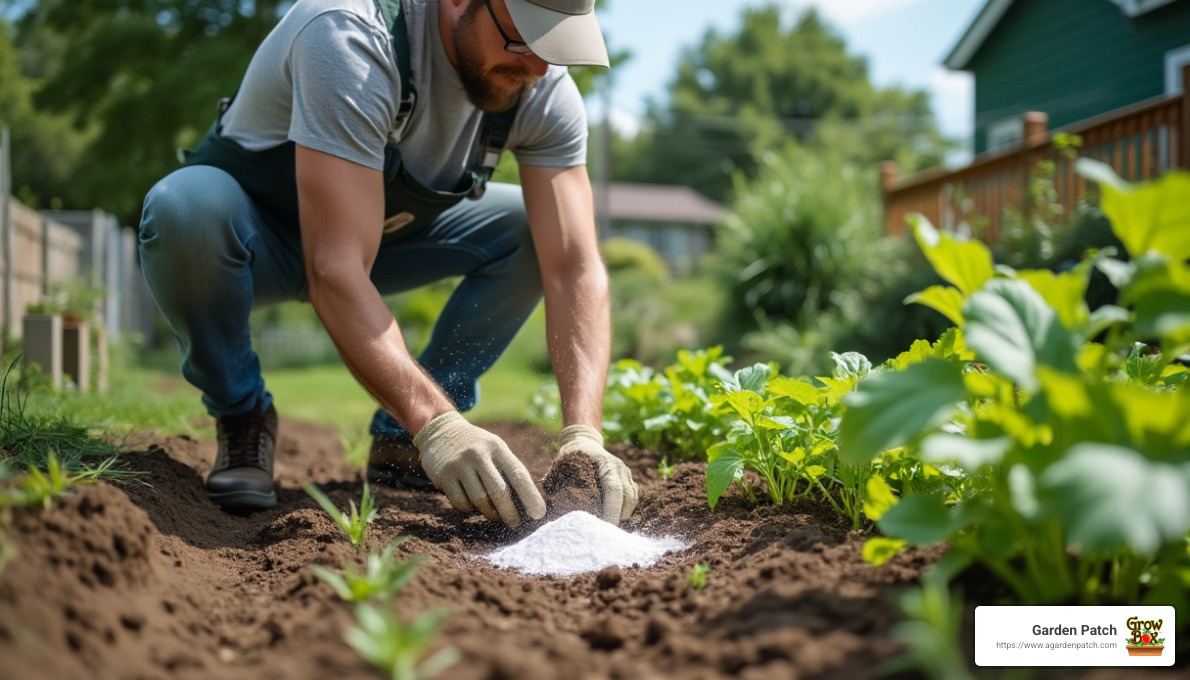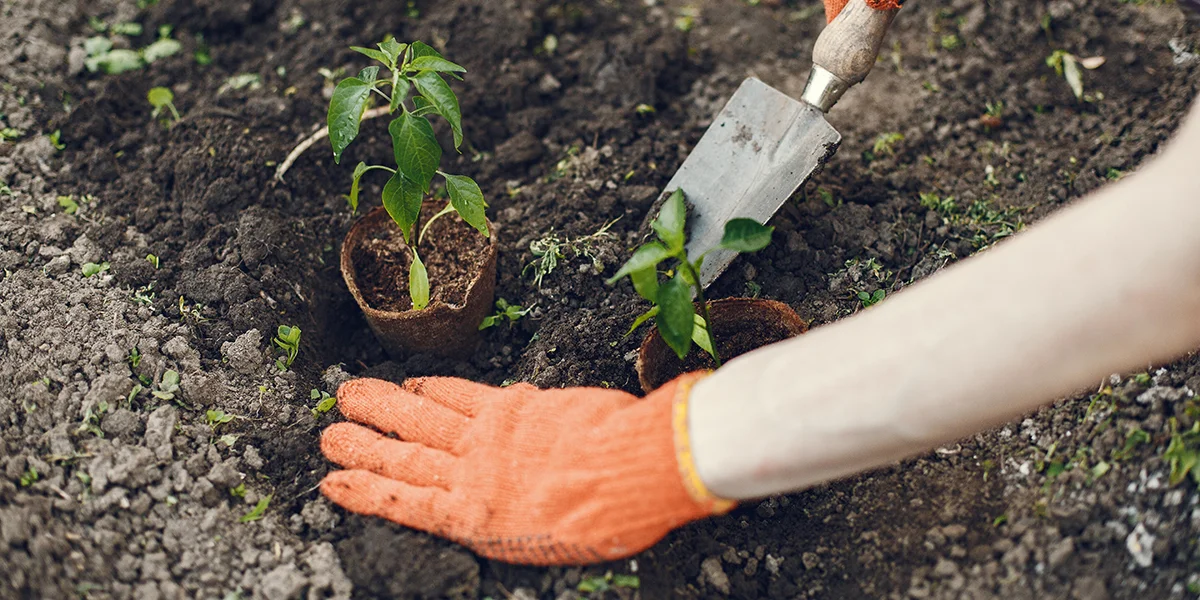Best mulch for vegetable gardens isn’t just about keeping your garden looking neat. It plays a vital role in maintaining soil health, reducing weeds, and improving plant growth. Here are some top picks to consider for your veggie patch:
- Compost: Nutrient-rich and promotes healthy soil structure.
- Straw: Economical and excellent at weed suppression.
- Pine Needles: Perfect for acid-loving plants and long-lasting.
Using these mulches, you’ll spend less time weeding and watering, while your plants thrive in a nutrient-rich environment.
Hey there, I’m Bill Vandeven! As a seasoned gardener with a passion for helping plants and people grow, I’ve spent years exploring the best mulch for vegetable gardens. From my experience with the Garden Patch GrowBox, I’m here to guide you toward a flourishing garden.

Best Mulch for Vegetable Gardens
When it comes to creating a thriving veggie patch, choosing the right mulch is key. Mulch not only keeps your garden looking tidy, but it also plays a crucial role in maintaining soil health, retaining moisture, and suppressing weeds. Let’s dig into why organic mulch is a top choice for your vegetable garden.
Organic Mulch: Nature’s Blanket
Organic mulch, like compost, straw, and shredded leaves, is a gardener’s best friend. It breaks down over time, enriching the soil with nutrients and improving its texture. This process supports healthy root development and plant growth. Plus, organic mulch is environmentally friendly and often free or low-cost if you use materials from your own backyard.

Moisture Retention: Keep It Cool and Damp
One of the biggest benefits of using mulch is its ability to retain soil moisture. By covering the soil, mulch acts like a sponge, soaking up water and keeping it available to your plants. This is especially important during the hot summer months when evaporation rates are high. Less time spent watering means more time enjoying your garden!
Imagine this: during a recent drought in Madison, heavily mulched gardens thrived while others wilted under the sun. Mulch kept the soil beneath cool and moist, ensuring plants had the water they needed to flourish.
Weed Suppression: Say Goodbye to Unwanted Guests
Weeds compete with your veggies for nutrients, water, and sunlight. But with mulch, you can drastically reduce their presence. By covering the soil, mulch blocks sunlight from reaching weed seeds, preventing them from germinating. This means less time spent weeding and more time harvesting your delicious veggies.
A fellow gardener once said, “Weeding is a complete waste of time.” And with the right mulch, it truly can be! Cover your soil, and let mulch do the hard work for you.
The Garden Patch GrowBox Advantage
With the Garden Patch™ GrowBox™, you get a fool-proof gardening system that makes mulching easy. The GrowBox’s Nutrient Patch™ ensures your plants get the right amount of nutrients, while its self-watering feature keeps the soil perfectly moistened. This means no more guessing about watering or fertilizing—just thriving plants, every time.
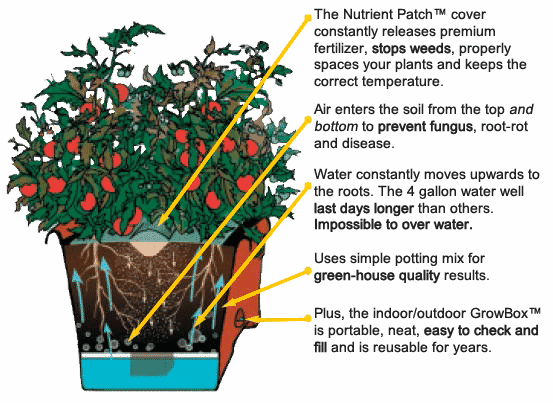
Ready to explore the top mulch options for your veggie patch? Let’s dive into the specifics of grass clippings, straw, shredded leaves, and more, so you can pick the perfect match for your garden needs.
Top Mulch Options for Your Veggie Patch
Choosing the right mulch for your vegetable garden can make all the difference. Here are some top options to consider:
Grass Clippings
Grass clippings are a popular choice because they’re often free and abundant. They’re rich in nitrogen, which is great for your plants. However, you need to ensure they’re herbicide-free to avoid introducing harmful chemicals into your garden.
Pro Tip: Let the clippings dry in the sun for a day before using them as mulch. This helps prevent them from becoming slimy and compacting, which can block air and water from reaching your plants.
Straw and Hay
Straw and hay are excellent mulching options, but they come with a few warnings. Straw is generally safer because it’s less likely to be treated with herbicides. However, both can introduce seeds into your garden, leading to unwanted weeds.
Watch Out: Always check that your straw or hay is free from persistent herbicides that could damage your veggies. A thick layer can help suppress any seeds trying to germinate.
Shredded Leaves
Shredded leaves are a fantastic way to add organic matter to your soil. They decompose quickly, improving soil texture and adding nutrients. Plus, they’re usually free if you have trees nearby!
Quick Tip: Shred leaves before using them as mulch to prevent them from forming a water-resistant mat. This will help water and air reach your plants’ roots effectively.
Compost
Compost is the king of mulches when it comes to enriching your soil. It’s nutrient-rich and improves soil health over time. A thick layer of compost provides a steady supply of nutrients as it breaks down.
Fun Fact: Compost can serve as a top dressing and mulch, reducing the need for additional fertilizers. Make sure your compost is evenly decomposed for best results.
Pine Needles
Pine needles, or pine straw, are perfect for acid-loving plants like tomatoes and carrots. They decompose slowly, providing long-lasting coverage. While they are acidic initially, they neutralize as they break down, so no need to worry about permanently acidifying your soil.
Heads Up: Pine needles can be poky and are not ideal for plants that prefer alkaline soil. Use them for plants that thrive in slightly acidic conditions.
With these options in mind, you’re well on your way to selecting the best mulch for vegetable gardens. Whether you choose grass clippings, straw, or another option, each type of mulch brings unique benefits to your garden.
Mulching Techniques for Optimal Results
Mulching your veggie patch is a simple way to boost plant health, but getting it just right involves a few key techniques. Let’s dive into the essentials: layer thickness, application timing, and soil temperature.
Layer Thickness
The thickness of your mulch layer can make a big difference in how well it works. Aim for a layer that’s 2 to 3 inches thick. This depth is perfect for blocking weeds while still allowing water and air to reach your plants’ roots. If you’re using lighter materials like pine needles, you might need to go a bit thicker, around 3 to 4 inches, to ensure adequate coverage.
Remember: Too much mulch can suffocate plants, so keep it balanced. When using newspaper, lay down 3 to 6 sheets for effective weed suppression.
Application Timing
Timing is everything when it comes to applying mulch. The best time to mulch your garden is in mid-spring. This is when temperatures are rising, and a fresh blanket of mulch will help insulate the soil and retain moisture. Avoid mulching too early in spring, as it can slow down soil warming, which is crucial for early growth.
Tip: If you’re planning to mulch in the fall or winter, ensure the layer doesn’t exceed 4 inches to avoid harming plant roots.
Soil Temperature
Soil temperature plays a vital role in plant growth. Mulch acts as a natural insulator, helping to keep soil temperatures stable. In summer, mulch keeps the soil cool and moist, reducing the need for frequent watering. In winter, it protects roots from freezing temperatures.
Pro Tip: Dark-colored mulches can help warm up the soil, making them ideal for early spring planting. Light-colored mulches, on the other hand, keep the soil cool, which is perfect for summer.
By mastering these mulching techniques, you’ll create a thriving environment for your veggies. Your garden will not only look neat and tidy, but it will also be more productive and easier to maintain.
Ready to tackle your garden’s challenges head-on? Let’s move on to some common questions gardeners have about using mulch effectively.
Frequently Asked Questions about Best Mulch for Vegetable Gardens
What is the best type of mulch for a vegetable garden?
When it comes to choosing the best mulch for vegetable gardens, organic mulches are often the top pick. They not only help retain moisture and suppress weeds but also improve soil health as they break down. Some popular organic options include:
- Compost: Nutrient-rich and great for enhancing soil quality. Just remember, it’s not the best for weed suppression.
- Grass Clippings: Free and full of nitrogen, but make sure they’re dry and untreated.
- Shredded Leaves: They decompose slowly, adding organic matter to the soil.
- Straw: Effective at weed suppression but be cautious of seeds that might sprout.
Each of these options offers unique benefits, so consider what your garden needs most.
Is bagged mulch safe for vegetable gardens?
Bagged mulch can be a convenient option, but safety depends on the type. When choosing bagged mulch for your veggie patch, look for untreated wood chips. These are typically free of harmful chemicals that could leach into your soil.
Avoid dyed mulches, as the dyes could be harmful to your plants. Stick with dye-free options to ensure your garden stays safe and healthy.
How does mulch prevent weeds?
Mulch is a gardener’s best friend when it comes to weed suppression. By covering the soil, mulch blocks sunlight, which weeds need to grow. This soil coverage effectively starves weeds before they can sprout.
For the best results, ensure your mulch layer is thick enough—2 to 3 inches is ideal. This creates a barrier that not only prevents weeds but also keeps your soil moist and your plants happy.
With these insights, you’re well on your way to mastering mulch in your garden. Wondering how to maximize your gardening success with the Garden Patch™ GrowBox™? Let’s explore more in the next section.
Conclusion
Gardening success is within your reach, and the right mulch selection can make all the difference. With the Garden Patch™ GrowBox™, achieving a thriving veggie patch is easier than ever. Our system takes the guesswork out of gardening, ensuring your plants receive the perfect balance of moisture and nutrients.
Choosing the best mulch for vegetable gardens involves considering factors like moisture retention, weed suppression, and soil health improvement. Organic mulches like compost and shredded leaves not only enrich your soil but also work harmoniously with the GrowBox™ to keep your plants vibrant and productive.
The GrowBox™ is designed to complement your mulching efforts. Its self-watering and self-fertilizing features mean you spend less time worrying about garden chores and more time enjoying the fruits of your labor. Imagine picking fresh, juicy tomatoes without the back-breaking work of traditional gardening!
Ready to transform your gardening experience? Find how the Garden Patch™ GrowBox™ can lift your garden to new heights. With our innovative system, gardening becomes a joy rather than a chore. Learn more about how the GrowBox™ can revolutionize your garden here.
Mulch on, and watch your garden flourish with ease and confidence!

